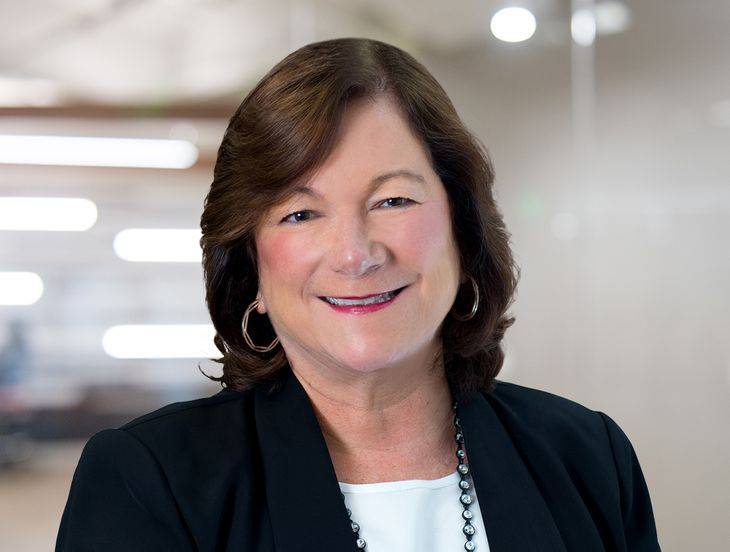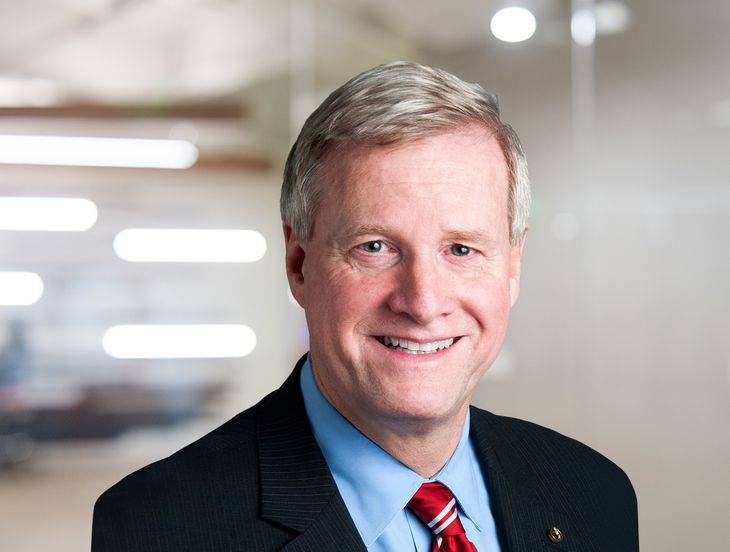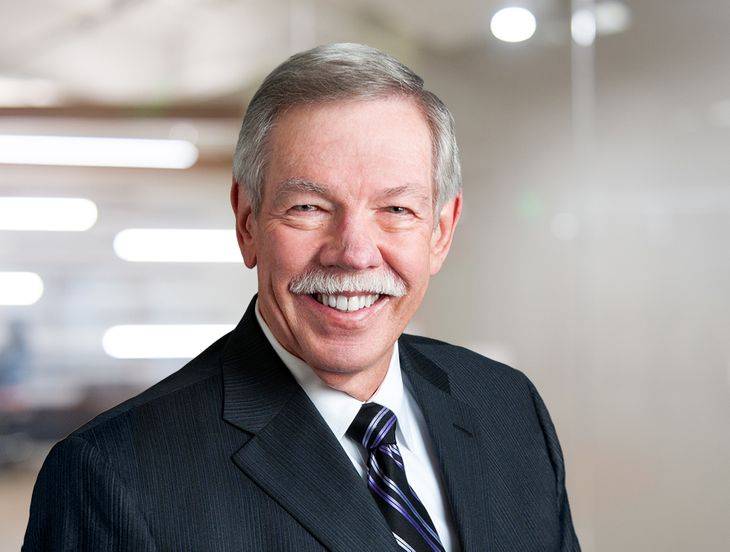Second Time's The Charm? An Employer's Guide To Labor Secretary Nominee Alexander Acosta
Insights
2.17.17
After his initial selection of Andrew Puzder was scuttled by staunch opposition from Democrats and worker advocates, President Trump nominated Alexander Acosta to be the country’s next Secretary of Labor. This Cabinet-level position heads the U.S. Department of Labor (USDOL), one of the federal agencies that has the widest and deepest impact on employers across the country. Assuming that Acosta is confirmed by the Senate, what should employers know about him in order to predict what life will be like under his tenure as part of the Trump administration?
We’ve assembled the opinions of some of our firm’s foremost thought leaders when it comes to this question, offering you a glimpse into what to expect for the next several years.
Acosta’s Background
Unlike Puzder, Acosta has public service experience under his belt and has several times been approved by the Senate for lower-ranking positions. President George W. Bush appointed him assistant attorney general for the Civil Rights Division in 2003, and he served in that role for two years. Acosta then served as U.S. attorney for the Southern District of Florida from 2005 to 2009.
Prior to that, Acosta also served on the National Labor Relations Board (NLRB) from December 2002 to August 2003, authoring over 125 opinions. These decisions could provide a helpful glimpse into how Acosta views the delicate balance between workers’ rights and management rights.
For the past eight years, he has served as the dean of the law school at Florida International University. Before entering government service, he worked at the law firm Kirkland & Ellis and taught at the George Mason School of Law. After earning an undergraduate degree from Harvard College and a law degree from Harvard Law School, Acosta worked as a clerk for then-federal appeals court judge Samuel Alito – who since has become one of the most conservative members of the U.S. Supreme Court. If confirmed, Acosta would be the first Hispanic member of Trump’s Cabinet, as he is the son of Cuban immigrants.
Interestingly, while President Trump has frequently indicated that he believes administrative regulations need to be severely curtailed in order to free up businesses to carry out their work, Acosta has taken a much different view. In 2010, Acosta wrote an article in law review encouraging at least one federal agency to shift from a “pre-World War II quasi-judicial administrative agency model” to one that more regularly issues rules. “Rulemaking is a better, more democratic, more stable, more transparent, and more modern path for quasi-legislative enactments,” he wrote, which represents the polar opposition position than the president’s. It will be interesting to see if Acosta carries through with this personal philosophy if he is confirmed and has the ability to issue regulations that would impact the nation’s workplaces.
Workers will be comforted to hear that Acosta has publicly indicated his support for civil rights. During a 2011 congressional hearing focusing on the backlash against Muslims after the September 11, 2001, attacks, Acosta praised the Department of Justice’s aggressive response to civil rights violations. He said the Department’s actions helped Muslim-Americans know “their government would protect their rights.” At that hearing, he called the United States a “nation built on principles of freedom, and high on the list of freedoms is freedom of religious expression.”
USDOL’s Role Over Employers
The USDOL impacts the inner workings of the American workplace on a daily basis. The department enforces laws involving employers and unions, and more importantly, develops binding regulations and directives for a variety of workplace laws. It encompasses over 30 agencies, boards, offices, and programs that each have a specialized role when it comes to labor and employment law.
The three most commonly known agencies and offices within the USDOL are the Wage and Hour Division (WHD), the Occupational Safety and Health Administration (OSHA), and the Office of Federal Contract Compliance Programs (OFFCP). However, the USDOL also has a role to play with respect to immigration law, and with the selection of Acosta, employers may also be interested to follow the goings-on which will take place at the Office of Labor-Management Standards (OLMS) – an office that could play a vital role over unionized workplaces in the coming years.
Wage And Hour Division
As opposed to President Trump’s previous nominee Andrew Puzder, Alexander Acosta does not have a long track record of making public statements about his views on wage and hour law. “He’s a bit of a wild card,” says Lori Armstrong Halber, a leader in the Fisher Phillips Wage and Hour Law Practice Group. “But he seems to fit the mold of a more traditional Republican Cabinet member, so it would stand to reason that he will follow the traditional GOP agenda when it comes to wage and hour issues.” If that turns out to be the case, you can expect a reduced emphasis on employer regulations under Acosta’s Department of Labor.
Certainly the most pressing current wage and hour agenda item sitting before the USDOL at the moment is the overtime rule, which sits in limbo after being blocked by a federal court judge in late November 2016 on the eve of implementation. Although the Obama Department of Justice initiated an appeal to try to resurrect the rule, that appeal is currently on hold given the Trump administration’s request for additional time “to consider the issues.” Armstrong Halber notes that the next round of government briefing on the case is due March 2, and that Acosta will probably not be confirmed by then. “It’s possible that the government asks for another extension request to allow Acosta a chance to weigh in and assert some leadership on the issue,” says Armstrong Halber.
While Puzder was an avowed critic of the overtime rule, it does not appear that Acosta has made any public comments on the matter. However, we should find out his position on the rule sooner rather than later. The same holds true for minimum wage increases and other similar topics affecting federal wage and hour law.
Occupational Safety And Health Administration (OSHA)
With respect to OSHA and workplace safety and health issues, Acosta’s views will likely be similar to those of President Trump – particularly with respect to regulations. That’s according to Edwin Foulke, Jr., co-chair of the Fisher Phillips Workplace Safety and Catastrophe Management Practice Group, and a former head of OSHA during the Bush administration (April 2006 to November 2008). “Acosta is seen as having a ‘pro-free-market and pro-free-enterprise’ history, and is known to have strong views against government interference in business,” says Fouke. As a result, he anticipates that Acosta will not be looking to issue a substantial number of new safety regulations during his tenure.
Instead, it is likely that he will look more to current regulations to see what changes need to be made in order to reduce the regulatory burden on businesses. Foulke notes that Acosta has served as the Policy Director for the Ethics and Public Policy Center, a group that advocates against government intrusion. Because of this work experience, Foulke anticipates that Acosta will focus on the whistleblower program at OSHA. “It is likely that Acosta will reverse the Obama administration’s changes which were intended to make it easier for whistleblowers to show discrimination and retaliation by lowering a complainant’s burden of proof,” says Foulke.
Moreover, because of his arguably pro-business stance, it is anticipated that Acosta will also move away from the sole enforcement focus that has been in the forefront of OSHA during the Obama administration. Instead, Foulke suspects that Acosta will move the agency toward an increasing focus on compliance assistance, which was more the norm in both Bush administrations and the Clinton administration. “You will most likely see more outreach to businesses in the forms of partnerships and alliances and a re-invigoration of the OSHA Voluntary Protection Program (VPP), which diminished during the Obama administration. In addition, with the decreased emphasis on enforcement and moving to a more balanced approach, I anticipate that an Acosta Department of Labor will not utilize negative press releases as a method to shame employers into enforcement, which was used extensively during the Obama administration,” says Foulke.
It should be noted that the items listed on OSHA's current Regulatory Agenda were placed there during the Obama administration. Foulke expects that Acosta will direct the agency to reach out to the business community and trade associations in order to determine what regulatory additions should be added to the current Regulatory Agenda. In addition, it is clear that Acosta’s OSHA under President Trump will look very closely at the revised Respiratory Silica Standard and the revisions to OSHA's Recordkeeping Standard, especially involving the electronic filing of employer injury and illness data and the impact on drug testing and safety incentives.
At this point, Foulke is uncertain whether Secretary Acosta will focus on rolling back the OSHA Penalty increases that occurred in the past year. Because of his previous experience working in the U.S. Department of Justice, it is unknown whether Acosta will continue the strong emphasis on criminal prosecutions for OSHA violations that was started in the Obama administration. Also to be seen is whether OSHA will reduce the focus on OSHA's Severe Violators Enforcement Program which was heavily utilized in the Obama administration. Finally, Foulke believes it is likely that Acosta will closely examine limiting the use of the “joint employer” doctrine, not only at OSHA, but also at several other USDOL agencies.
Office Of Federal Contract Compliance Programs
The OFCCP is the office that ensures employers doing business with the federal government (federal contractors and subcontractors) comply with certain nondiscrimination laws. The most common example of OFCCP’s power includes affirmative action requirements, but the office’s reach goes much further than that.
The executive branch has wide latitude when it comes to creating law governing the actions of federal contractors and subcontractors, often pursuing certain goals without having to work through Congress. According to Tom Rebel, co-chair of the Fisher Phillips Affirmative Action and Federal Contract Compliance Practice Group, the Obama administration made multiple changes to affirmative-action-related requirements via executive orders and presidential memos, bypassing Congressional or rules-making processes in many instances.
The agency also expanded regulatory requirements for affirmative action programs under the Vietnam Era Veteran’s Readjustment Assistance Act and Section 503 of the Rehabilitation Act. “We do not expect any reversion of the affirmative action regulations under Secretary Acosta,” says Rebel, “but we will likely see some efforts to negate some of the more onerous executive orders.”
Among the Obama-era initiatives that Rebel believes could be rolled back in the Acosta Labor Department is the 2009 Executive Order that requires employers to post notice of employees’ right to organize into unions (E.O. 13496). Rebel notes that Acosta is, by background, an employer-side labor lawyer, and points to his service on the NLRB as an experience that may shape his time leading the USDOL. “I expect that he will be sympathetic to those who believe E.O. 13496 unfairly casts government as pro-union, so that order may receive attention under his watch,” says Rebel.
Rebel also says employers should pay attention to E.O. 13495, which requires successors to service contracts to offer jobs to predecessor employees. “I believe both Trump and Acosta could view this rule as an unnecessary and unfair infringement on business in its choice of its workforce,” and therefore could be targeted for reversal according to Rebel. Others which could be rolled back include:
- The so-called “blacklisting” executive order, formally known as Fair Pay and Safe Workplaces, that requires disclosure of certain workplace law violations during the previous three years, prohibits arbitration agreements relating to Title VII or sexual assault, and requires certain pay information be given to employees and independent contractors (E.O. 13673) (NOTE: most of these requirements have been blocked by a federal judge and seem likely to never go into effect);
- The 2015 executive order that requires federal contractors to provide paid sick leave accrual for employees working on or in connection with some government contracts (E.O. 13706); and
- The 2014 executive order establishing a minimum wage much higher than federal levels (currently $10.15 per hour and $10.20 per hour as of January 1, 2017).
However, one area that Rebel does not expect to change under Acosta is the rule that adds sexual orientation and gender identity as categories protected from employment discrimination by contractors. “The Trump administration has already made a public statement that this rule will not change under his watch, so I can’t imagine Acosta’s Labor Department doing anything to seriously curtail the rights of LGBTQ workers.”
Pay Equity
Pay equity is expected to continue to be a growing area of workplace law under Acosta’s watch. Besides the fact that many states have enacted or strengthened existing equal pay laws the federal government has stepped into the fray in the past year. In September 2016, the Equal Employment Opportunity Commission (EEOC) adopted new EEO-1 reporting requirements that mandate employers with 100 or more employees – and not just federal contractors subject to OFCCP rules – report pay data beginning in March 2018 (using 2017 compensation data). While this initiative will be within the purview of the EEOC and not the USDOL, it was spurred in part by a presidential memorandum directing the USDOL to increase data collection related to wages and gender. Although OFCCP’s activities in this area were shelved when the EEOC took the lead on developing the proposed changes to the EEO-1, both agencies will have access to the compensation data.
Kathleen McLeod Caminiti, co-chair of the Fisher Phillips Pay Equity Practice Group, believes this revised EEO-1 rule could be on the chopping block under Acosta’s USDOL. She notes that one of President Trump’s first executive orders instructed federal agencies to eliminate two old regulations for every new regulation they impose. “With the President’s mandate in mind, it is quite possible that Acosta will work with the EEOC to withdraw this expanded EEO-1 requirement.” says Caminiti.
However, she warns that “employers should not fall into a false sense of security,” pointing out that the trend toward expansive state legislation makes it very important for companies to remain vigilant in the area of pay equality. For this reason, Caminiti counsels that “employers should review pay practices promptly with a view toward identifying and addressing pay disparities based upon gender and other protected classifications.” She explained that “while pay equity will not likely be on the top of Acosta’s agenda, compliance with state laws and litigation avoidance should provide ample justification for employers to continue to prioritize pay equity issues.”
Immigration
While most employers are aware of the involvement of the federal government in workplace immigration matters, not all are aware of the fact that the USDOL plays a role in enforcing federal immigration policy. And according to Kim Thompson, chair of the Fisher Phillips Global Immigration Practice Group, Acosta’s background may play a significant role in shaping his views on the subject of immigration.
“His background as the son of Cuban immigrants has had to influence his life and his perspective on immigration, so he may very well turn out to be a pro-immigration influence on the administration – at least with respect to Cuban immigration,” says Thompson. However, Thompson also points to his time as Assistant Attorney General for the Civil Rights Division at the Department of Justice as an experience that may have shaped his views, so she believes he also may turn out to be very aggressive when it comes to enforcing immigration program requirements.
And because the USDOL is responsible for processing quite a few such programs, including PERM/Labor Certification proceedings, H-1B visas, and more, Acosta could ring in a new day for employers when it comes to immigration matters. The president stated on the campaign trail that he favors limiting American job opportunities for skilled foreign workers and there is a draft executive order fashioned by his staff may make it more difficult for lower-paid roles to qualify for H-1B status. We can safely assume that Acosta will fall in line with whatever directive the White House generates, but his USDOL can also impact the process at the initial stages.
The USDOL handles the Labor Condition Application (LCA) step, which is a prerequisite to the filing of the H-1B with the USCIS. “Under Acosta, we can’t be sure whether the USDOL will start ramping up on H-1B Wage and Hour Division audits and investigations to ensure compliance with the LCA’s terms and conditions,” says Thompson, although that is certainly possible.
With respect to green card cases, the USDOL handles the PERM/Labor Certification process, which is the first step in most of the employment-based green card cases. “For years, we have heard rumblings about modernizing the process,” says Thompson, “and Acosta could be the one who finally revises the steps necessary to recruit U.S. workers and the hoops employers need to jump through to get the PERM approved.”
However, there is a concern that even if Acosta carries moderate views on workplace immigration matters, he will not be able to carry out initiatives based on these views. There was widespread reporting in the waning days of Puzder’s doomed nomination that the deciding factor that led several key Republicans to withhold support for his candidacy was his perceived soft stance on immigration. “If Acosta finds himself handcuffed by a White House that needs to present an aggressive front on immigration matters, he may not have a chance to have much of an influence on workplace immigration programs no matter his own personal views,” concludes Thompson.
Office of Labor-Management Standards
While most employers are familiar with OSHA and the Wage and Hour Division, and federal contractors are intimately familiar with OFCCP, you could be forgiven if the Office of Labor-Management Standards (OLMS) sounds foreign to you. This office is charged with the mundane-sounding task of managing the receipt of funds by labor unions, and has the power to investigate in order to ensure union payments are legitimate. Under the Obama administration, this office steered clear of controversy and could generally be counted on to respond favorably to the concerns of labor.
But things under Trump could be different – radically different. “Although early indications seem to show unions are more satisfied with Acosta than they were with Puzder, they may still run into trouble during Trump’s tenure in the White House. His time controlling the Labor Department could very well lead to the awakening of a sleeping giant in OLMS,” says Todd Lyon, a partner who practices in the Fisher Phillips Labor Relations Practice Group. Under President Obama, OLMS contains 44% fewer full-time employees than it had under the Bush administration, but Trump could ratchet that number up again under Acosta’s leadership. That might spell trouble for unions and provide another weapon in employers’ arsenals when it comes to keeping their workplaces union-free.
“From the outset, it appears that Acosta does not carry the same strident ideological streak that made Puzder a lightning rod of controversy. I would expect Acosta to be more of a mainstream Labor Secretary,” says Lyon, “meaning he will faithfully execute the wishes of the president when it comes to policy.” If Acosta turns out to be as pro-management as many hope, he could hold unions accountable to ensure that union dues are spent on activities that serve the needs of bargaining unit members, and not union executives.
“OLMS has the power to ensure that working men and women have a transparent view of where their hard-earned money given to unions is spent,” says Lyon. Unions have long been required to provide a full accounting of their finances through reports such as the LM-2 form, allowing the public to view union officers’ salaries and benefits, as well as gaining a window into union expenditures on service providers and vendors. “But these forms are only as valuable as the agency charged with policing them,” says Lyon. And Acosta’s appointment under Trump might just usher in a new era that could see heightened scrutiny and rules enforcement when it comes to this information.
Simply by holding labor’s feet to the fire and ensuring the information is comprehensive and accurate, the Trump White House and Acosta’s USDOL could present a gift to employers in the form of greater transparency. “The more information the better,” says Lyon. Employers can use information from the LM-2 to point out to disaffected workers that the union representing them or seeking to win their vote might not have their best interests at heart – or at least are not as careful with their money as workers might hope.
For more information, visit our website at www.fisherphillips.com, or contact your regular Fisher Phillips attorney.
This Legal Alert provides an overview of agency positions and predictions. It is not intended to be, and should not be construed as, legal advice for any particular fact situation.
Related People
-
- Kathleen McLeod Caminiti
- Partner and Co-Chair, Wage and Hour Practice Group
-
- Edwin G. Foulke, Jr.
- Partner
-
- Todd A. Lyon
- Partner
-
- Richard R. Meneghello
- Chief Content Officer
-
- Thomas Paul Rebel
- Senior Counsel




